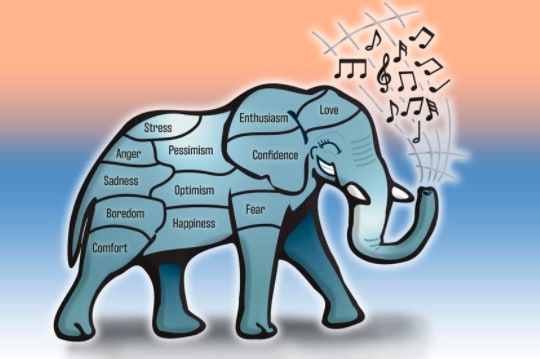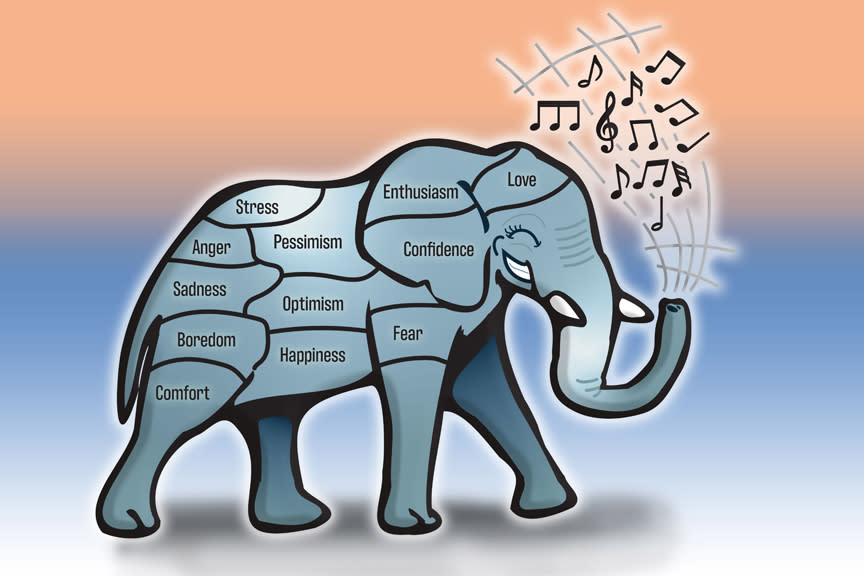
Rider, Elephant, Path: A Fun and Effective Framework for Making Change
To reach your goals, you’ve got to tame an elephant. Here’s how.
In work or in life — success depends not only on your ability to see what’s working and what’s not, to find new opportunities, and to make decisions. Often, it also requires you to adopt new behaviors in order to seize these opportunities and meet new goals; but changing behavior can be really hard!
Fortunately, whether your goal is big or small, a personal new year's resolution or something work-related, there’s a fun and effective change management metaphor that can help you successfully get from point A to point B.
Using insights from behavioral science, the “rider, elephant, path” analogy provides a simple but powerful framework that explains how change happens, and makes it easier to change behavior so you can achieve the results you want.
In working with clients and conducting trainings, I regularly share the short video The Rider, the Elephant and the Path: A Tale of Behavior Change, which in just two minutes does a great job of summarizing the analogy. It's based on the book Switch: How to Change Things When Change is Hard , by Chip and Dan Heath. In fact, this analogy is so good, THEY borrowed it from Jonathan Haidt, a professor at New York University. It goes like this: Psychologists know that there are two systems in our brains — the rational system and the emotional system, which are not always in agreement. Think of your brain as a human rider atop an elephant on a path.
— The rider is the logical, rational, decision-making part of the brain; the part that plans, analyzes and problem-solves.
— The elephant is the emotional part of the brain, and it powers the journey. A lot of care and feeding is required to keep the elephant moving forward, and to prevent it from becoming demotivated and sitting down on the job, refusing to budge and spoiling your plan. Its six-ton weight advantage is what makes adopting new behaviors so difficult. The rider can try to lead the elephant or drag the elephant, but if these two ever disagree, who would you bet on?
— The path represents the external environment. It's the road to your destination. The elephant and rider are more likely to complete the journey if you make the path easier by shortening the distance and removing any obstacles in their way. Path problems can cause both the rider and elephant to get derailed.
Bottom line: If you want to lead change, you've got to do three things:
1. Give direction to the rider — providing knowledge of how to get to the destination
2. Motivate the elephant — by tapping into emotion
3. Shape the path — to allow for easy progress
That's how change happens. This method can be applied in any situation that requires sustainable, meaningful change, whether personal or professional, you're alone on your journey, or collaborating with a caravan of others.
For Example:
You resolve to start taking an exercise class before work every day. Your rider has rationally assessed the situation and concluded this is a wise idea. For your well-being (and to fit into those skinny jeans tucked in the back of your closet), your goal is to lose 20 pounds. You're already paying for a gym membership you hardly use. Going to a daily fitness class will be good for your health and more cost-effective; and doing so before work will energize you for the day, allowing you to feel better and be more productive. Plan made, rider on board. Check!
Your elephant is at first aligned. After all, you have visualized together how you’ll look in those skinny jeans, how much more energy and stamina you will have, and how much better you will feel. The elephant’s heart has swelled with positive emotion. That lasts three days.
On morning four, the elephant whispers in the rider’s ear, "But the bed is so warm, and it's cold out there!" And, “You haven't worked out in so long, this is not as enjoyable as I remember." That day, the elephant wins, and you hit the snooze button.
For this plan to work, you need to remotivate the elephant. Using visioning techniques that help you literally keep your eye on the prize is great for this. In fact, vision boards, goal posters, meditations and other visualization techniques have all been invented to help motivate that elephant. Even music you love that puts your elephant in a good mood is helpful.
Many athletes successfully use sports visualization techniques,* picturing themselves wearing the gold medal while the national anthem plays, or seeing themselves cross the finish line, to help them get the performance outcome they want. They have learned how to tame their elephant.
Now for the path: Knowing that the harder the path is the more difficult it will be to keep the elephant motivated and the rider aligned, you think about the path ahead. To get to class each morning, you have to get out of the warm bed into the cold morning air, change clothes, put on your sneakers, find the car keys and phone, and leave the house. To simplify the path you could:
➡️ Sleep in your workout clothes so you don’t have to change, or set them out the night before so you can get dressed more quickly
➡️ Leave your sneakers next to your bed, and put your keys, wallet, water bottle and cell phone next to your sneakers
Now, with everything addressed: The rider understands the plan, the elephant is happily humming its favorite tune while envisioning how you’ll look in your skinny jeans, and the path has been decluttered and simplified. You are on your way to true success!
Usage in a Business Setting
While we have used a personal example for the purposes of this article, I have employed the rider-path-elephant method in corporations to help them following mergers and acquisitions, implement new multi-million-dollar enterprise resource planning (ERP) systems, bring about culture change, help teams become aligned, and even set up and launch new divisions.
Remember: If it’s a rider problem the solution is always more information (think communications and training plans). If it’s an elephant problem, you are dealing with fear (most likely) or other emotion, so you need a motivational solution. And if it’s a path problem, you need to simplify how the elephant and rider get from point A to point B — shorten the path, and remove obstacles. A challenging path gets the rider wondering if this is really a good idea, and causes the elephant to demotivate again. When faced with apathy, stalls, plateaus, or even outright resistance, ask yourself, “Is this a rider, elephant, or path problem?” Once you figure that out, you can address the issue.
If your school or business is grappling with a challenging period of change, M3E Change Associates can help. We are dedicated to helping organizations effectively manage major change — enabling them to operate efficiently, achieve their objectives, and ensure that everyone involved feels treated with respect and integrity. Our change management expertise includes educational consulting, virtual workplace technologies, large IT system implementations, process redesign and harmonization, mergers and acquisitions, organizational development, training, communications and leadership coaching.
To learn how we might be of assistance, please call 862-362-2M3E (2633) or schedule a free consultation today.
*Tip: Martial arts master Ken Nazemetz advises, "It's important to use a relaxation technique before you begin any visualizations. If your body is stressed, cramped, or in any other unrelaxed state, it is difficult to achieve mental focus. Bringing your body to a relaxed state will enable your mind to visualize at peak potential.”
Images

